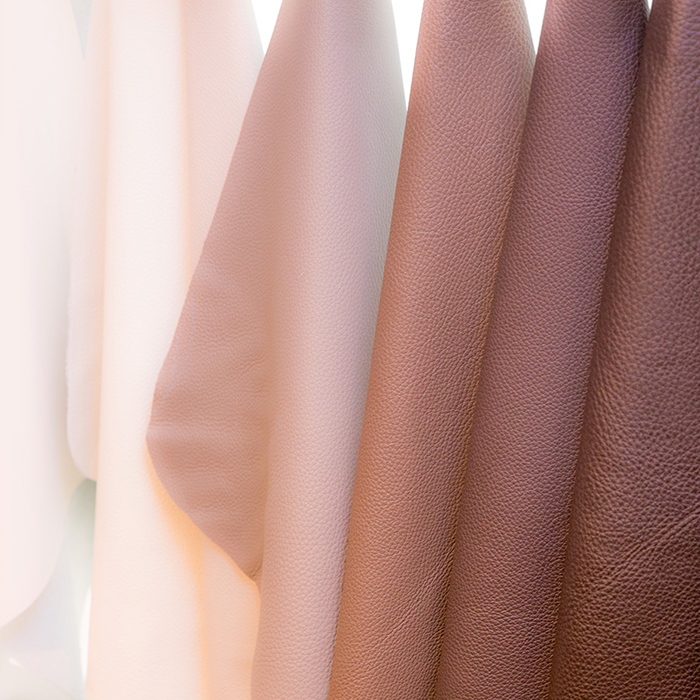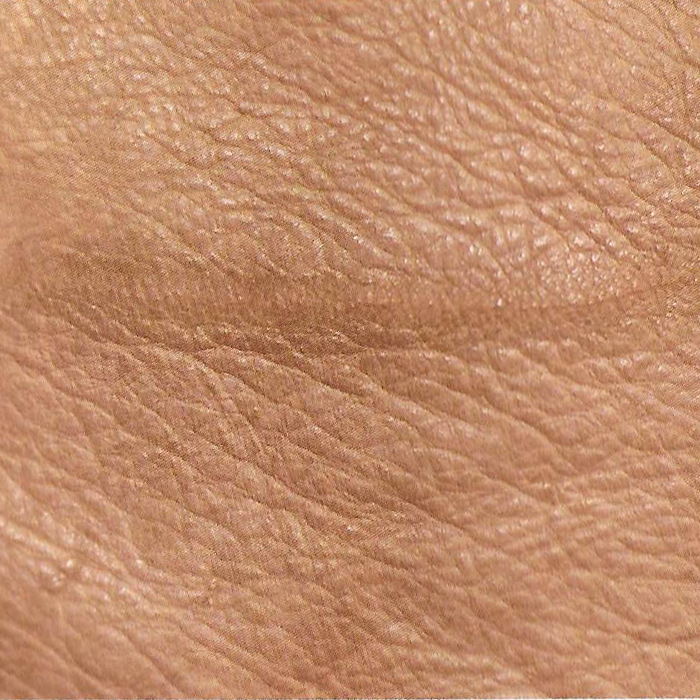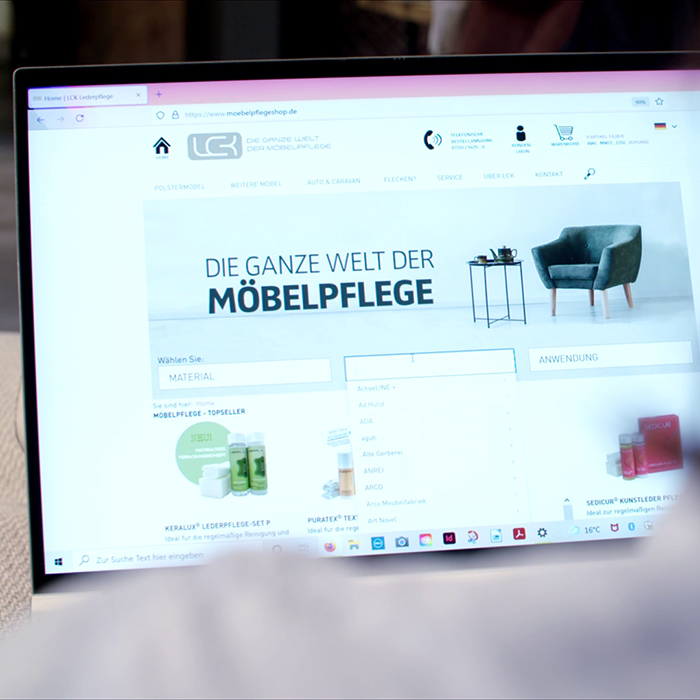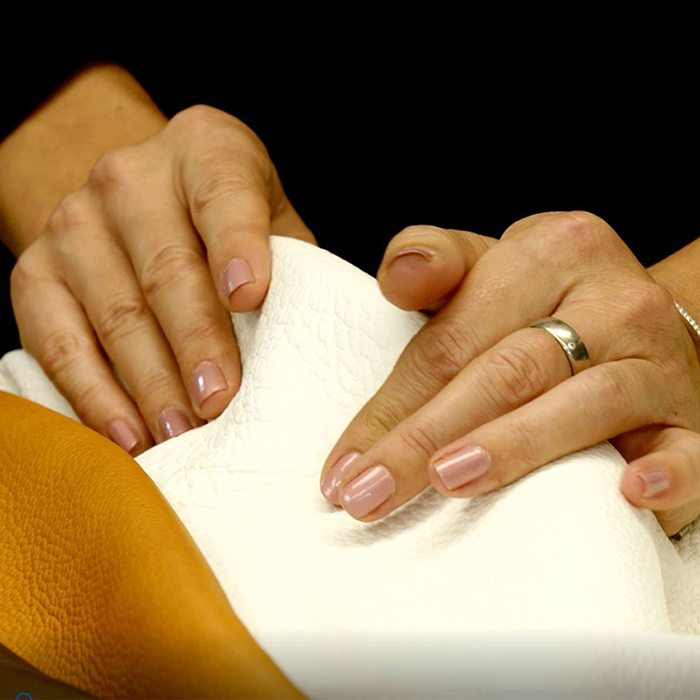Inform yourself well about the right type of leather
Choosing the right type of leather determines whether you will be happy with your leather sofa or not. Unfortunately, not only the furniture trade, but also some sofa manufacturers often describe leather as an insensitive upholstery material, “just wipe with a damp cloth” is sufficient as maintenance effort. However, especially with sensitive types of leather such as pure aniline or nubuck leather, this is not enough to enjoy your leather sofa for a long time.
Because choosing the right leather is so important when buying a sofa, we have put together some useful information to help you decide:
Standards for furniture leather
The standards for furniture leather are largely set by the leather manufacturers and furniture makers and are therefore not very strict. Whether for UV sensitivity, grease sensitivity or ease of care. Occasionally, therefore, the test confirms that a leather is within the standard, but the customer ends up with an unsightly set after a few years through no fault of their own. But manufacturers don't have it easy either. The beautiful leathers are more sensitive and the easy-care leathers are less attractive and feel colder and stiffer. You can't do both at once.
There are also numerous repair products and leather repair companies. But you must contact a specialist company in good time if you have a problem. Furniture owners often get in touch far too late, and it would have been much easier and cheaper to help a few years earlier.
There are dedicated furniture stores (mostly family businesses) that offer very good advice and excellent customer service. The staff at large furniture chains tend to be less committed and contacts are often changing or via external service providers. As furniture is not easy to ship and many repairs cannot be carried out on site, the cost of a good service is very high. Many manufacturers shy away from these expenses.
However, there tend to be manufacturers who stand out due to their quality or care in the choice of leather. For example, furniture sold as “long life” leather by various suppliers tends to be less sensitive. These customers are more likely to call a leather specialist later and are not dissatisfied. These leathers are usually in the mid-price range.
Even high-priced furniture is usually of good quality. The prices are extremely high, but so is customer satisfaction. The leather quality is obviously particularly good compared to other high-priced suppliers.
Questions: Where does the leather for my sofa come from?
Very little leather furniture is made in Germany and very little leather comes from German cows and has been tanned in Germany. Conversely, not everything from other countries is bad. But the more exotic the countries are, the more cautious you should be.
Origin of the furniture: Poland is probably the furniture factory for Europe and does not have a bad reputation. Of course, other European countries also make good furniture. Furniture from Asia has a reputation for being particularly cheap. The quality is correspondingly poor. Therefore, always ask where the furniture was produced.
Origin of the leather: Cowhide is generally used for furniture. Although cattle can be found all over the world, the animals are reared differently and therefore the quality of the raw material also varies. Raw materials from southern Germany are considered to be particularly good. The animals are kept and cared for optimally. Cowhide also comes from South America or India. Although it cannot be said across the board that leather from “exotic” countries is worse, you do have to take a closer look.
Location of the tannery: Experience has shown that tanneries in Northern Europe are much more strictly monitored than those in the south of Europe and in exotic countries. If leather of “high quality” and “low in harmful substances” and “tested” is sold, the location of the tannery should play a role. Again, not all tanneries in exotic locations make poorer quality leather, but leather from northern Europe tends to be safer in quality.
Strength of the leather
Many factors have an influence on the formation of creases and dents (seat indentations) in the leather:
- Thickness of the leather
- Elasticity or stretchability
- Size of the surfaces
- Softness of the upholstery
- Tautness of the leather cover
The thicker the leather, the less elastic it is, the smaller the surfaces, the firmer the upholstery and the tighter the upholstery, the less such phenomena occur.
Many customers assume that thicker leather will last much longer. The reason why leather furniture is no longer beautiful or usable is usually its appearance. Leather damage such as stains, signs of abrasion, fading, dry cracks, etc. make a piece of furniture unusable or worthless. The leather only tears at some point when it has long since lost its appearance. A thicker leather does not tear as quickly as a thinner one, but a shabby-looking thick leather is no advantage either. Cowhides are very tear-resistant. Only split leather tears more easily. If you are offered a choice between “thick” and “thin” leather, you should choose the thick leather.
Colour of the leather
Generally speaking, darker colours are “easier to care for” than light colours. On light-coloured surfaces, changes are clearly more visible and therefore also more care-intensive and sensitive. The problem of “jeans discolouration” or the discolouration of textiles on leather and imitation leather in general has increased considerably, and manufacturers evade liability in the “small print”. You should therefore be particularly careful with light-coloured surfaces. If discolouration occurs, you should react quickly. The faster you clean, the better the chances of success.
Particularly bright or garish leather colors are also more sensitive. They are not as easy to produce and also tend to discolor more quickly due to textiles and fade more easily.
Leather furniture - 5-year guarantee
In addition to the statutory warranty, some furniture manufacturers offer longer warranty periods. A 5-year guarantee is often offered for leather furniture. Special attention should then be paid to the small print. The statutory warranty can only be limited to a small extent.
However, a guarantee is a voluntary promise by the manufacturer. Read carefully what is actually guaranteed. Often, the terms are obscured or it is obvious things that never actually happen that are covered by the guarantee. The mishaps that can really happen to a furniture owner are often excluded. Ask about specific cases that are covered by the guarantee and ask to see the guarantee conditions and check the small print yourself to see if it applies. Imagine damage that you expect to be covered by the guarantee and check the small print to see if it really is covered.
Extending furniture warranties - special impregnations
Some furniture stores offer a “special impregnation” with the purchased upholstered furniture for an additional charge with “guarantees”. As a rule, these offers do not come from the furniture manufacturer, but from external companies. However, many furniture manufacturers exclude their own warranty if the purchased furniture is treated with third-party products. If the furniture manufacturer excludes its warranty if third-party products are applied, this is not a recommendation for this additional service. You should take a close look at the small print to see what is actually “guaranteed” and how it is settled in the event of damage. Many typical leather damages are excluded from the “guarantee”. You should therefore always check which risks you can imagine yourself and whether these are included in the guarantee.
The following should always be borne in mind with such guarantees:
- Ask whether the furniture is not yet sufficiently protected by the manufacturer. As a rule, furniture is suitable for use from the manufacturer and has the best possible protection.
- Important! Ask for written confirmation in the contract that the furniture manufacturer recommends impregnation for its own furniture.
- Important! Have it confirmed in writing in the contract that the furniture manufacturer's warranty remains valid. As a rule, the manufacturer's warranty expires if third-party products are used on the furniture.
- Check exactly what the guarantee actually means over and above the statutory guarantee. Often there are only flowery descriptions or “small print”. Think about cases where you expect the service and have the contract show you where it is written. Have a typical “warranty case” explained to you and then check where it is written in the contract.
The right leather care
With regular care, all types of leather last longer and remain less sensitive. However, as damage due to a lack of care only occurs after the guarantee or warranty period, this topic is usually not addressed at all during the sale. Cleaning and care are often viewed negatively by the seller and are therefore often answered with recommendations such as “This leather is so good, it doesn't need any care”. In addition, there is often a lack of knowledge about which leather is best cared for and how. If problems occur later, it is often assumed that the leather has been cleaned and cared for too sparingly or incorrectly. Therefore, always ask for cleaning and care instructions and check that they are clearly formulated.
Basic rules for handling leather furniture
- First check whether the leather is absorbent or non-absorbent. With absorbent leathers (aniline leather or suede), a rubbed drop of water penetrates and darkens the leather. With non-absorbent leathers, water runs off. Absorbent leathers are more sensitive.
- Test all applications in a concealed area first. There is a risk of “worsening”, especially with open-pored leathers!
- Regular cleaning and care of furniture leathers prevents soiling and significantly extends the service life.
- If soiled, always clean first before care!
- Always leave the leather to dry on its own. Do not blow-dry or dry directly in the sun. Otherwise the leather may shrink.
- Light-colored leathers have the risk of “jeans discoloration”. If discoloration occurs, always clean immediately to prevent dyes from being absorbed.
- Always apply all products over a large area from seam to seam.
- Do not attempt to remove stains that have been absorbed into the leather by rubbing vigorously. This can cause additional damage to the surface. It is better to ask a leather expert for advice.
- Never try to remove stains with strong solvents (acetone, nail polish remover, turpentine, etc.). This tends to make the stains bigger.
- Do not treat the leather with unsuitable products, e.g. shoe polish, cosmetic cream, floor polish, etc.
- Leather is affected by direct sunlight or running radiators. The leather can fade and dry out. Avoid these effects as far as possible. Always use leather care products with appropriate UV protection.
- Leather shows signs of wear over time and some leathers fade over time. If changes (scratches, abrasions, stains, fading, etc.) become visible, you should act in good time. The sooner leather is cleaned and cared for and color damage is repaired, the easier it is to keep the leather looking good for a long time. Advice is often sought far too late.
- Leather has an optimum humidity of 40 to 60% and requires air circulation. If the humidity exceeds 70% and there is insufficient air circulation, leather can become moldy.
- Colored leather furniture, especially open-pored leather, oiled leather or suede should not be placed directly against light-colored walls with rough surfaces to avoid color abrasion. A simple test: rub a damp, light-colored cloth over the leather in a concealed area and check the abrasion. Slight abrasion is normal with these types of leather.








